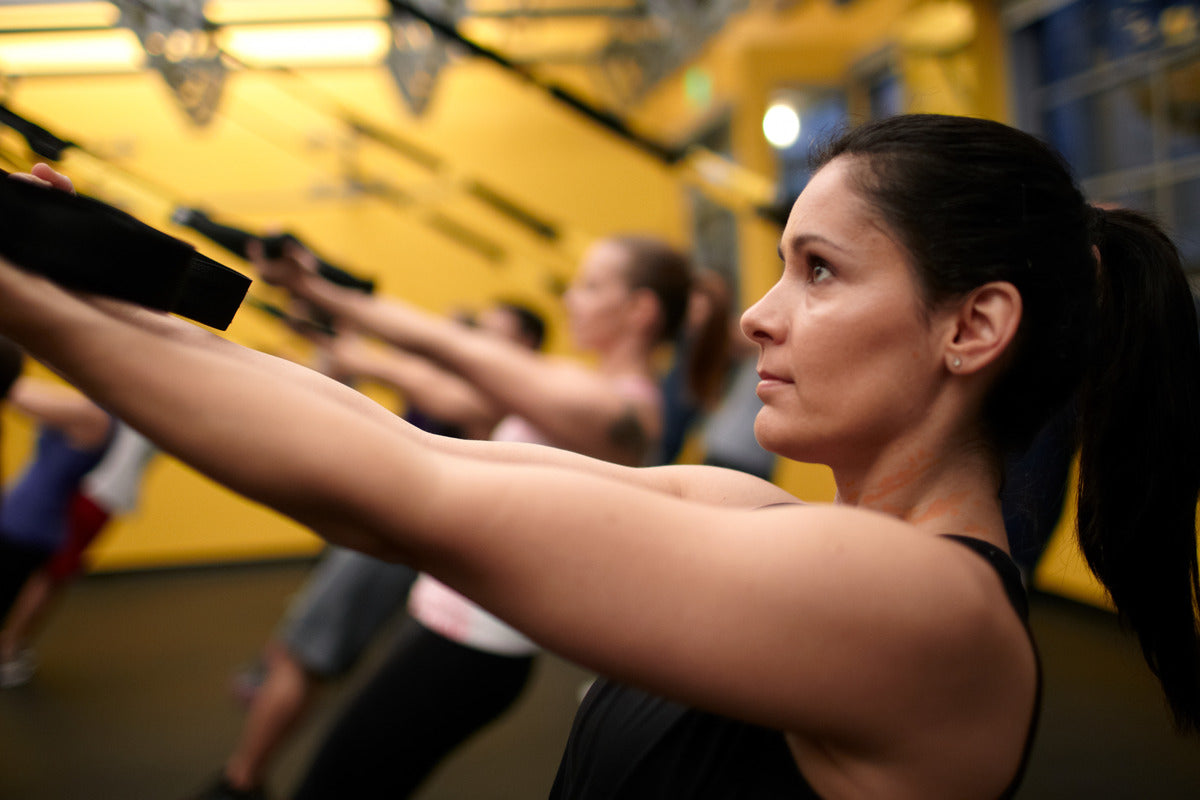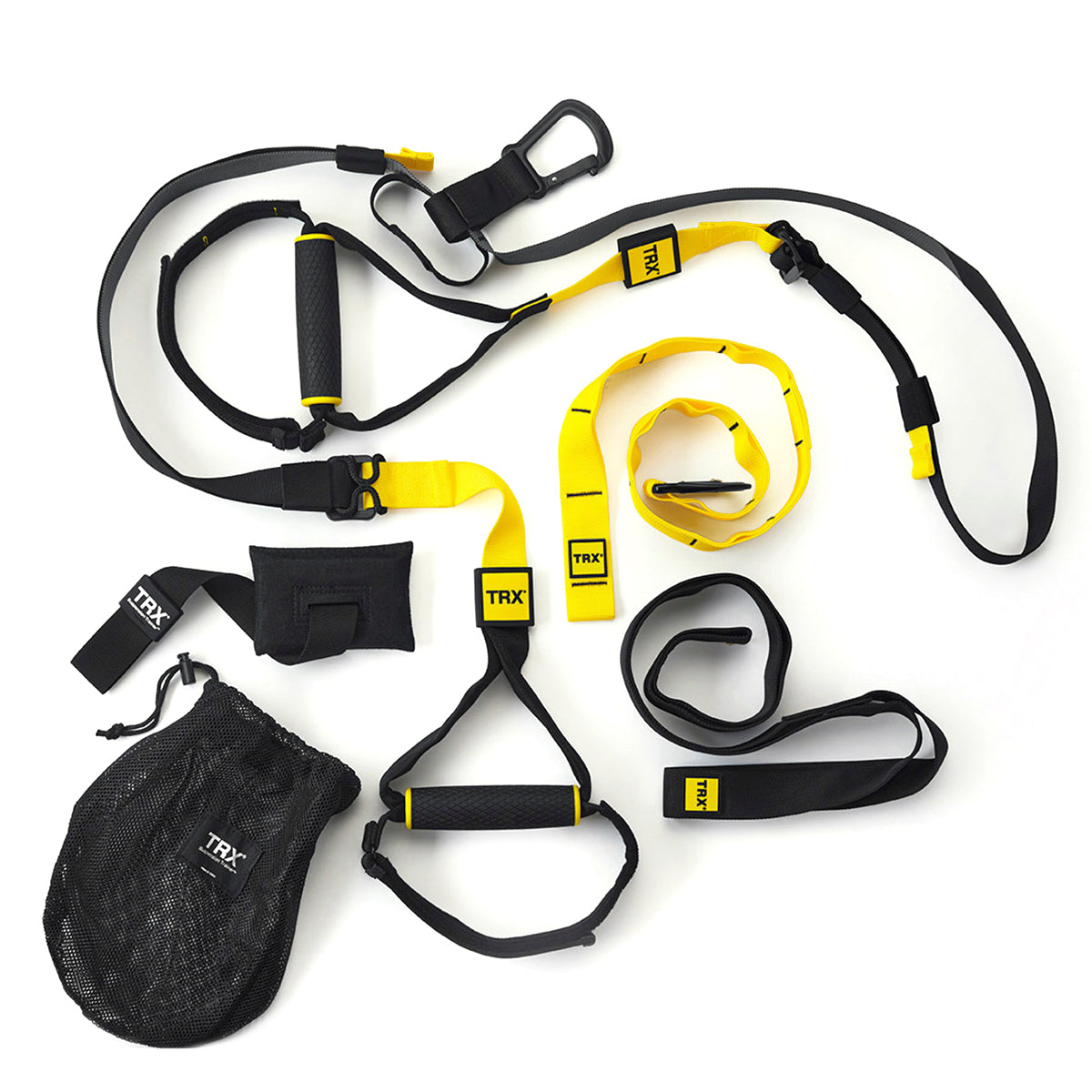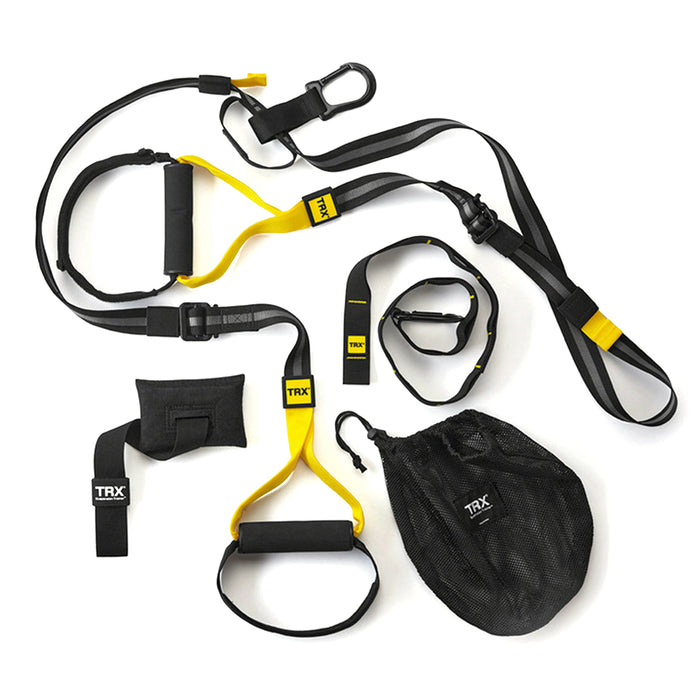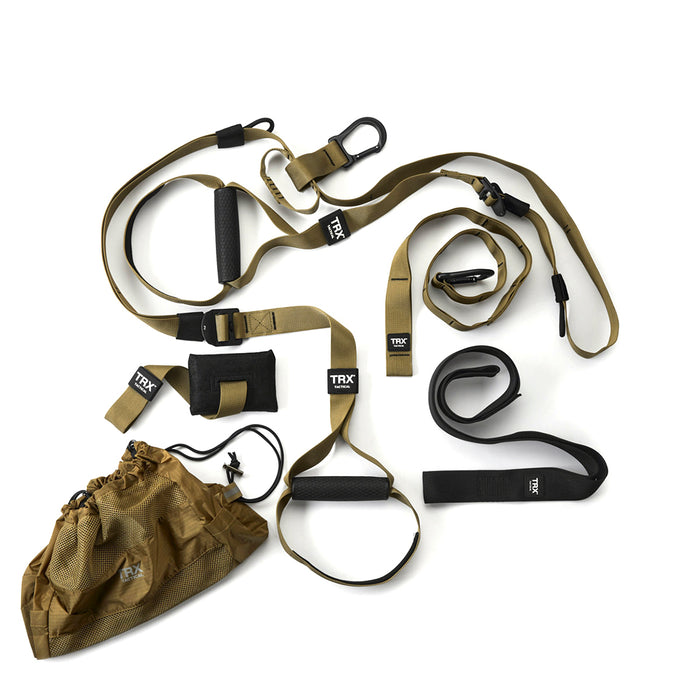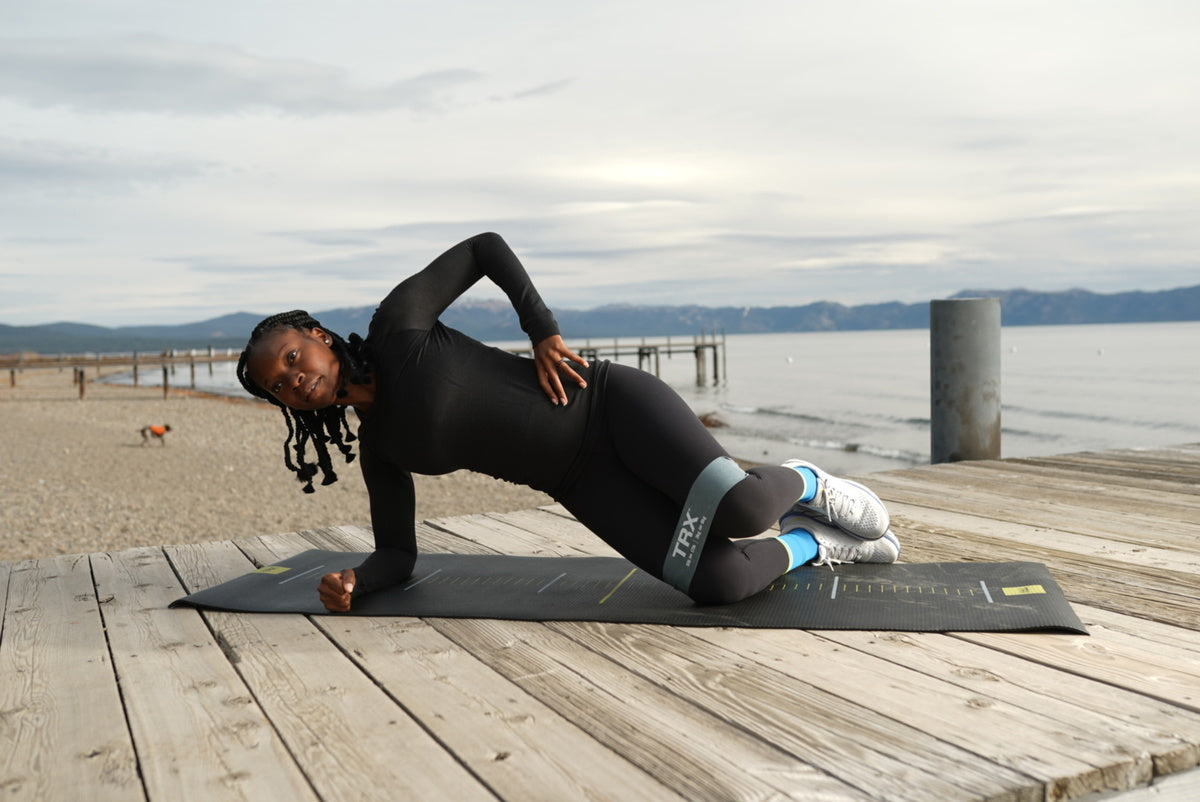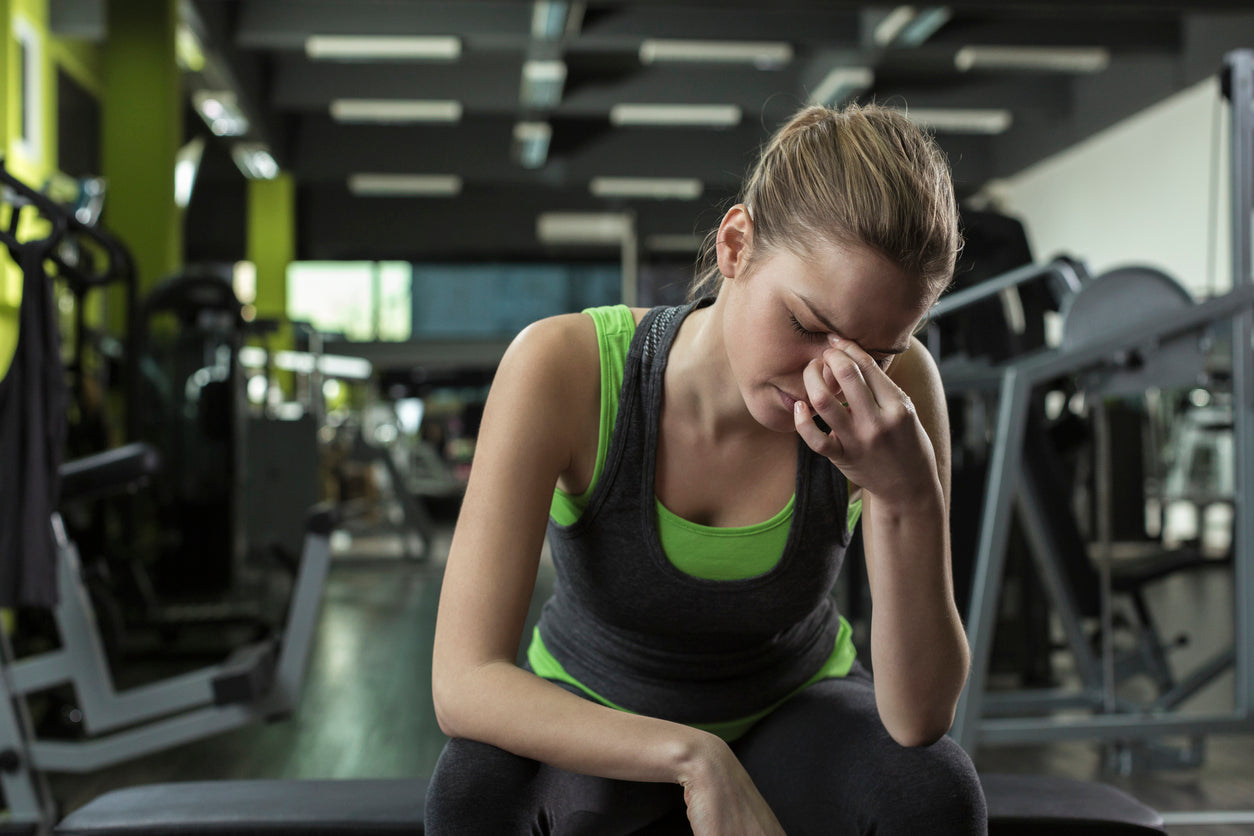Bodyweight arm exercises are integral for upper body toning, providing a convenient and accessible means to build lean muscle, enhance definition, and improve functional strength. These exercises engage various muscle groups, promoting joint stability and offering versatility in workout routines. From push-ups to tricep dips, their adaptability accommodates diverse fitness levels and goals, making them an effective component for achieving upper body strength, endurance, and aesthetic improvement.
Bodyweight exercises stand out for their remarkable convenience and effectiveness in promoting fitness. With no need for specialized equipment, they offer a versatile and accessible way to build strength, enhance muscle definition, and improve overall functional fitness. Let’s get into it.
What Arm Muscles Are We Targeting?
Bodyweight exercises effectively target key arm muscles, encompassing the biceps and triceps through movements like push-ups and dips, while also engaging forearm muscles and deltoids. Additionally, chin-ups activate the brachialis, contributing to overall arm strength and definition. Stability-focused movements, including planks, work the rotator cuff muscles, enhancing shoulder stability.
Well-toned arm muscles provide increased stability, allowing for more efficient movement patterns and reduced risk of injuries.
Try These 14 Bodyweight Arm Exercises Today
If you want to build your upper body at home, bodyweight exercises offer a diverse array of options for sculpting and strengthening the arms. From the simplicity of push-ups and dips to the challenge of chin-ups and pike push-ups, these exercises cater to all fitness levels without requiring specialized equipment.
Here’s what you’ll need:
You won’t need much gear, but if you want to expand your exercise list, we highly recommend getting a suspension trainer. This will open up other bodyweight exercises like tricep dips and bicep curls. Either way, find a space or build a home gym and try these exercises today.
Arm Circles
A versatile upper body exercise, arm circles bring a myriad of benefits suitable for individuals of all fitness levels. Executed by extending arms to the sides and making circular motions, this simple yet effective movement enhances shoulder mobility, serves as an excellent warm-up, and tones key arm muscles including the deltoids, triceps, and biceps. The exercise is adaptable, allowing beginners to start with smaller circles and gradually increase size and speed as they progress. Variations such as changing the direction of circles, incorporating weights, or performing seated arm circles provide options for customization based on individual fitness levels and goals. Including arm circles in interval training routines further amplifies their versatility, offering a dynamic and accessible workout that promotes shoulder health and overall upper-body strength.
TRX Push-Up
TRX push-ups are an effective and challenging variation of the traditional push-up, incorporating suspension training for added difficulty and muscle engagement.
How to Do:
- Begin by adjusting the TRX straps to mid-calf length.
- Place feet in the foot cradles and maintain an active plank position as a foundation for this exercise.
- Engage the core to maintain a straight line from head to heels.
- Lower your chest toward the ground by bending your elbows, keeping them close to your sides.
- Ensure a full range of motion by lowering the chest as close to the ground as possible.
- Push through the palms to extend your arms and return to the starting position.
TRX push-ups heavily engage the chest muscles, promoting strength and definition. The movement activates the triceps, contributing to overall arm strength. The suspended position intensifies core engagement, aiding in stability and balance.TRX push-ups target the shoulders, enhancing deltoid development.
Arm Lateral Raises
How to Do:
Performing arm lateral raises with proper form is crucial to effectively target the deltoid muscles while minimizing the risk of injury.
- Stand with your feet shoulder-width apart for stability.
- Maintain a slight bend in your elbows to avoid unnecessary strain.
- Stand tall and with proper body alignment. Keeping the slight bend in your elbows, exhale and lift both arms away from your body to the sides.
- Raise your arms until they are parallel to the ground or slightly below shoulder height. Focus on using the shoulder muscles to raise the arms.
- Perform the exercise in a slow and controlled manner to maximize muscle engagement.
Maintain a neutral spine throughout the movement. Avoid arching your back, as this can strain the lower back. Keep a slight bend in your elbows throughout the exercise. Avoid locking your elbows to prevent unnecessary stress on the joint. Tighten your core muscles to stabilize your torso and prevent excessive swaying or leaning. Depress your shoulder blades (bring them down and back) during the movement to ensure proper activation of the deltoid muscles.Exhale as you lift the arms and inhale as you lower the arms. Maintain a steady and controlled breathing pattern.
Maintain proper range of motion by lifting the arms to shoulder height. Rushing through the exercise can compromise form and reduce the effectiveness of the workout. Focus on controlled movements.
Forearm Planks
Forearm planks provide a multifaceted workout, targeting both arm and core strength. This exercise engages key muscle groups, including the rectus abdominis and obliques for core sculpting, while activating the deltoids and triceps to promote shoulder and arm strength. Beyond aesthetic benefits, forearm planks contribute to improved posture, enhanced stability, and functional strength in daily activities. The isometric nature of planks challenges muscular endurance, fostering stamina in the core and arms.
- Begin by aligning your elbows directly beneath your shoulders, placing your forearms parallel, and keeping your hands flat or clasped together.
- Engage your core by drawing your navel toward your spine, and ensure a straight line from head to heels to preserve spinal neutrality.
- Depress your shoulder blades to avoid hunching, keep your head in a neutral position, and level your hips with the rest of your body.
- Straighten your legs and maintain hip-width spacing while breathing steadily.
TRX Face Pull
TRX face pulls are an effective exercise for targeting the upper back, shoulders, and rear deltoids. Variations of the face pull include one arm pull while the other arm supports your body. This variation increases the demand on the engaged side, promoting unilateral strength and stability.
- Adjust the TRX straps to a mid-length position
- Stand facing the anchor point with your feet hip-width apart.
- Hold one handle in each hand with an overhand grip, palms facing down.
- Walk your feet forward until your body is at a slight angle. Arms fully extended, maintain tension on the TRX straps.
- Engage your core to maintain a straight line from head to heels.Initiate the movement by pulling your hands towards your face, keeping your elbows high and wide.
- Squeeze your shoulder blades together at the end of the movement, bringing the handles close to your temples.
- Pause for a moment, then extend your arms back to the starting position in a controlled manner.
Related: Back Exercises at Home
Tricep Dips
Tricep dips are an effective bodyweight exercise that targets the triceps, shoulders, and chest. Find parallel bars or sturdy elevated surfaces like parallel dip bars, parallel bars on a dip station, or the edge of two parallel sturdy chairs to do this exercise.
- Stand facing forward with your feet flat on the ground, shoulder-width apart.
- Grip the bars with your palms facing downward, shoulder-width apart.
- Keep your arms fully extended. Maintain a straight posture with your shoulders down and your chest up.
- Position your feet slightly in front of you, creating a 90-degree angle at the elbows. Inhale as you bend your elbows, lowering your body straight down.
- Lower yourself until your elbows are at a 90-degree angle or slightly less. Ensure your upper arms are parallel to the ground.
- Exhale as you push through your palms, extending your arms and returning to the starting position.
- Fully straighten your arms at the top without locking your elbows to maintain tension on the triceps.
To maximize the effectiveness of the triceps dip exercise maintain an upright torso, and avoid leaning too far forward. Keep a slight bend in the elbows to ensure constant tension on the triceps. Move through a full range of motion by lowering until elbows are at a 90-degree angle. Prevent shoulder shrugging by maintaining proper shoulder position. Engage the Core during the exercise to enhance stability and body alignment. Breathe consistently throughout the exercise.
TRX Tricep Dips
Traditional tricep dips involve supporting the body on a stable surface, emphasizing the triceps, shoulders, and chest. In contrast, TRX tricep dips add complexity by incorporating suspension, engaging additional muscles for stability. TRX allows for adjustable intensity and challenges the core, offering a dynamic variation compared to the grounded stability of traditional dips. The exercise steps are still the same, except you’re gripping the TRX handles rather than bars.
For beginners, increase the angle of your body by walking your feet closer to the anchor point. This reduces body weight resistance. For an intermediate level, maintain a moderate angle and focus on controlling the movement. For advanced levels, elevate the feet on a bench or platform, creating a more challenging angle.
Chin-Ups/Pull-Ups
Chin-Ups/Pull-Ups target multiple muscle groups simultaneously, including lats, rhomboids, trapezius, biceps, and forearms. Focusing on upper back development, these exercises help build strength, thickness, and definition in the upper back, contributing to improved posture. Other benefits include dynamic engagement of biceps and forearms, enhancing overall arm strength and grip strength. This exercise mimics real-world pulling motions, promoting functional upper-body strength for everyday activities
Increasing the difficulty of your training is essential for ongoing progress and preventing plateaus. Gradually incorporate additional weight into exercises. For chin-ups and pull-ups, use a weight belt with a weighted plate or wear a weighted vest to increase resistance. Aim to increase the number of repetitions you perform for a particular exercise. Focus on adding one or two more reps in each set over time. Modify your body position to increase difficulty or experiment with more challenging grips, such as wide grip or mixed grip.
Bodyweight Rows
Performing bodyweight rows, also known as inverted rows, is an effective way to target the muscles of the upper back, including the lats and rhomboids.
- Use a sturdy horizontal bar at waist height or a suspension trainer like TRX.
- Stand facing the bar or suspension trainer. If using a bar, the grip should be slightly wider than shoulder-width.
- Grasp the bar with an overhand grip (palms facing down) or an overhand grip (palms facing up).
- Walk your feet forward until your body is at a slight angle, lean back, and extend your arms fully.
- Initiate the rowing movement by retracting the shoulder blades. Imagine pulling the chest toward the bar.
- Bend elbows, pulling the chest towards the bar while keeping the body in a straight line.Focus on squeezing shoulder blades together at the top of the movement to engage the upper back muscles. The chest should be close to or touching the bar, and the elbows should be fully bent. Keep the body straight without sagging at the hips or arching the back excessively.
- Lower the body back to the starting position in a controlled manner. Fully extend arms without locking elbows. Maintain tension in the upper back muscles throughout the lowering phase.
There are many variations of bodyweight rows which include overhand grip rows that emphasize the lats and rhomboids, neutral grip for targeting the biceps, underhand for biceps, and lower lats, all can be done with elevated feet for an advanced challenge. Another variation includes single-arm rows which challenge unilateral strength and target stabilizing muscles.
TRX Biceps Curls
If you want to exercise your biceps at home, TRX biceps curls are an effective exercise. If you don’t have a suspension trainer, this is an optional exercise you can add later when you have the equipment. The other alternative is weighted or resistance bicep curls, but TRX bicep curls mainly utilize your body weight.
How to Do:
- Adjust the straps to mid-length.
- Stand facing the anchor point, and hold handles with an underhand grip (palms facing up).
- Walk forward to the appropriate angle.
- Position feet shoulder-width apart.
- Engage the core to maintain a straight body line from head to heels, with arms fully extended.
- Initiate the curl by bending elbows, and bringing pinkie fingers to temples. Keep upper arms stationary, and focus on contracting biceps throughout the movement while flexing the elbows.
- Hold the contracted position for a brief pause, squeezing your biceps with your hands close to the forehead. Gradually extend elbows, lowering body back to the starting position.
When performing TRX biceps curls, the key to maximizing effectiveness lies in emphasizing controlled motion and isolating the bicep muscles throughout the exercise. Execute the entire range of motion in a deliberate and controlled manner, avoiding the use of momentum or swinging to lift hands.
Related: The 30-Minute At-Home Full Body Workout
Plank Tap
Plank taps are a dynamic variation of the traditional plank exercise that involves tapping alternate hands to the opposite shoulder or hip while maintaining a plank position. This exercise offers several benefits for both arm and core stability.
Plank taps offer a multifaceted approach to enhancing arm and core stability. By engaging in this dynamic plank variation, individuals benefit from strengthened core muscles, including the rectus abdominis, transverse abdominis, and obliques, promoting overall stability. Simultaneously, the tapping motion challenges shoulder stability, targeting muscles such as the deltoids, rotator cuff, and scapular stabilizers. The exercise builds arm strength, particularly in the triceps and biceps, contributing to upper-body endurance. Plank taps also enhance balance, coordination, and posture, aligning the body properly. Their functional fitness aspect mimics real-world movements, and the exercise provides variety to prevent workout monotony.
TRX Tricep Extension
Perform TRX triceps extensions to effectively target and strengthen the triceps while engaging the core and maintaining stability. Similar to TRX bicep curls, this is an optional exercise but it provides a myriad of benefits that make it one of the top bodyweight exercises for your arms.
- Begin by adjusting the TRX straps to their full length. Stand facing away from the anchor point with a stable base of support, holding one handle in each hand using an overhand grip.
- In the initial position, extend your arms fully in front of you at forehead height, maintaining a plank throughout the movement.
- Lower into position by slowly bending the elbows, allowing your hands to move toward your forehead while keeping the elbows aligned.
- Execute the triceps extension by straightening your elbows, focusing on using the triceps to push your body back to the starting position. This step-by-step guide ensures a comprehensive movement that targets the triceps, engages the core and enhances overall stability.
Incorporate variations in body angle to tailor the difficulty of the triceps extension. Adjusting your body angle influences the challenge level of the exercise, with a more parallel position to the ground intensifying the movement. Beginners can start with a more upright stance and gradually progress to a lower angle as they build strength. Another effective triceps exercise is the Reverse Grip Triceps Extensions. Supinate the hands on the handles to isolate forearm muscles while simultaneously activating the triceps. This grip variation adds diversity to your workout routine, targeting specific muscle groups for a well-rounded approach to triceps training.
Plank Up-Down
Plank up-downs, also known as plank transitions, offers a dynamic twist to the traditional plank exercise, engaging multiple muscle groups like the core, shoulders, arms, and chest. The step-by-step guide involves starting in a plank position, hands under shoulders, fingers spread, and body forming a straight line.
- Engage your core, lift one arm, and place your forearm on the ground, repeating with the other arm for a forearm plank.
- To return, replace one hand, straightening your arm, then follow with the other.
The fluid transition between high and forearm planks challenges coordination and proprioception, making plank up-downs a dynamic, full-body workout.
Downward Dog to Push Up
The transition from Downward Dog to Push-Up is a fluid and effective movement that combines elements of yoga and strength training. Given yoga’s effectiveness for toning your body, we highly recommend adding this sequence to your next workout:
- Start in a plank position with your hands shoulder-width apart and your feet hip-width apart.
- Lift hips toward the ceiling, pressing the chest back toward your thighs, forming an inverted V shape.
- Keep hands firmly planted on the ground with heels reaching toward the floor. Inhale as you shift weight forward, moving the shoulders over the wrists creating a high plank position, maintaining a straight line from head to heels.
- Tighten the core to stabilize the body in the plank position. Lower down while exhaling by bending elbows and lowering the chest toward the floor. Keep elbows close to the body and aim for a 90-degree angle at the elbows.
- Ensure that the body remains in a straight line throughout the push-up, and avoid sagging or lifting the hips. Push through your palms, extending your arms to return to the high plank position.
- Exhale and lift the hips back toward the ceiling, returning to the Downward Dog position.
The fluid movement from Downward Dog to Push-Up offers a range of benefits that contribute to overall fitness and well-being. One key advantage of incorporating this sequence into your workout routine is full-body engagement. Other advantages include strength building, core activation, shoulder mobility, cardiovascular benefits, functional movement, time efficiency, mind-body connection, and adaptability.
Try This Sample Bodyweight Arm Workout Today
Now that we’ve taken a look at some bodyweight exercises, it’s time to put them all together. Try this sample bodyweight arm workout that you can do just about anywhere. We’d recommend your living room or backyard.
Warm-Up:
Arm Circles: 2 sets of 30 seconds (15 seconds forward, 15 seconds backward)
Main Workout: (TRX exercises are optional but highly recommended if you have a suspension trainer)
Push-Ups:
3 sets of 12 reps (modify as needed)
Focus on proper form, keeping your body in a straight line.
TRX Rows: 3 sets of 12 reps
TRX Triceps Extensions: 3 sets of 8-12 reps
Downward Dog to Push-Up Transition: 3 sets of 10 reps
Plank with Alternating Shoulder Taps:3 sets of 45 seconds
Feel free to adjust the number of sets and reps based on your fitness level and preferences. Always prioritize proper form and listen to your body. If you have any health concerns, it's advisable to consult with a fitness professional or healthcare provider before starting a new workout routine.
For more bodyweight workouts like the one above, be sure to try the TRX Training Club. You’ll gain access to thousands of sessions from world-class trainers. Try today.
Conclusion
Incorporating bodyweight arm exercises into your workout routine offers numerous advantages. These exercises are convenient and accessible, requiring minimal or no equipment. They contribute to improved arm strength, muscle tone, and functional fitness by engaging in stabilizing muscles and promoting balance and coordination.
Make these exercises a non-negotiable part of your routine, and watch the cumulative benefits unfold. Your consistent effort today is an investment in the resilient, empowered self you're creating for tomorrow. Keep going, stay committed, and let the transformative journey continue.

